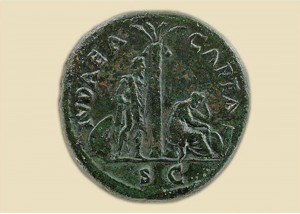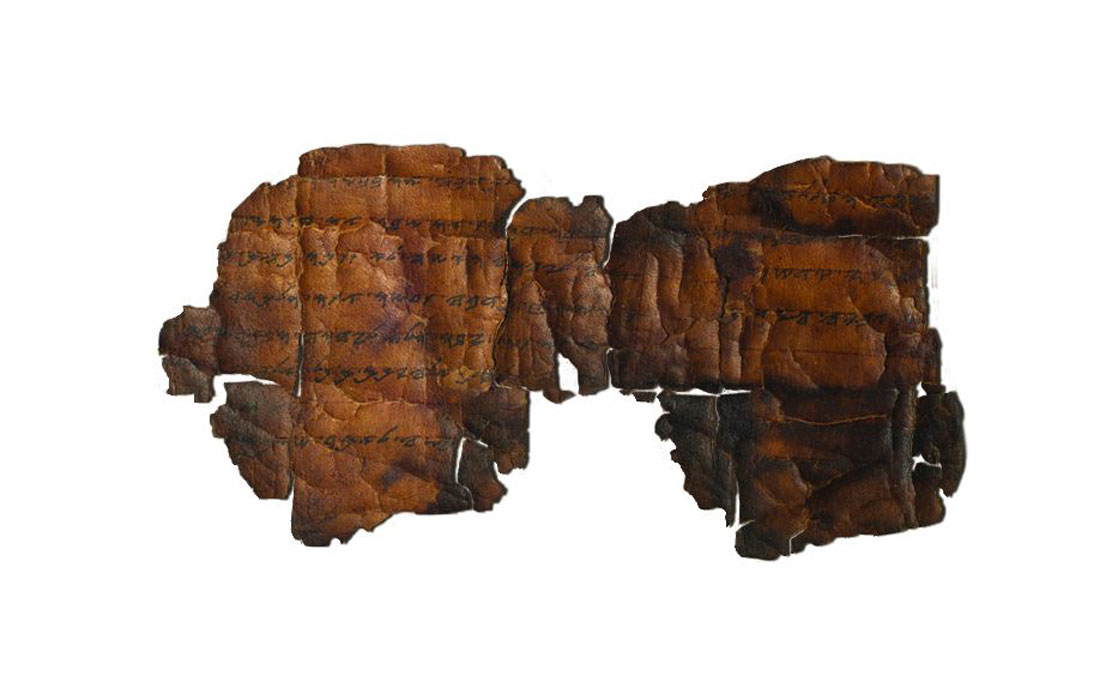One of the largest, most comprehensive exhibitions of Dead Sea Scroll fragments ever shown, and the largest ever in Texas, Southwestern Baptist Theological Seminary’s Dead Sea Scrolls & the Bible: Ancient Artifacts, Timeless Treasures features 21 original fragments — just little bits of paper but important bits — along with contextualizing artifacts and other works of antiquity. The show will be up until mid-January.
Discovered in caves near the Dead Sea in the late 1940s, the scrolls date as far back as 2,520 years and include the oldest-known copies of every book of the Hebrew Bible –– calling it “The Old Testament” is evidently controversial –– except Esther. Prayers, commentaries, and hymns are also contained on the papyrus in black and red ink. More than 1,000 years older than any previously known copies of the Hebrew Bible, the scrolls, most scholars believe, were copied and composed by the Essenes, a short-lived sect of Jews, and are mostly written in Hebrew, Aramaic, and Greek.
The exhibit, displayed with skill and thoughtfulness, is impressive. The first few rooms are devoted to ephemera from the time period, all of it startling in its technological brilliance. Even back in the first century A.D., likenesses of faces and objects appeared on coins. In one display case, a silver coin about the size of a dime is engraved with an eight-rayed star wreathed in Hebrew inscriptions. The contrast is not as sharp as on a new American dime but, for being about 2,000 years old, it is mighty remarkable.

Hellenistic oil lamps, amphorae, medical instruments, ossuaries, and pottery, including alarmingly elaborate plaques, glide past as you make your way through the assorted hallways that lead to cases containing exact facsimiles of the Isaiah A scroll, the Manual of Discipline, and the Habakkuk Commentary. The scrolls unfurl horizontally down a narrow corridor, with translations below. The literary imagery is often beautiful, the themes running from emboldening (“Your eyes are too pure to look at evil”) to damning (“Since you pillaged many countries the rest of the peoples will pillage you”).
The rooms containing the 21 actual fragments are tight and, for conservation purposes, dark. Of all of the displays, easily the most striking is the one devoted to Genesis, on display for the first time. One of the partial stories is the famous one of Joseph and his “robe of many colors.” You can read as little or as much as you like, but, please, if you want to read every word, do not stand right in the middle of the display case and press up against it like a basketball player boxing out an opponent. Stand back like a, um, Christian lady or gentleman and make room for everybody. If you can’t see the translations well enough to read them, stand next to them off to the side.
The remaining rooms are filled with the scrolls’ aesthetic descendants. The standout among the medieval manuscripts is an Armenian lectionary whose floral illumination in lapis lazuli and vordan karmir red is so richly detailed and precise it looks machine-made.
One of the last rooms shows what you get when you compile a zillion fragments in one book. The antique Bibles are gargantuan. And spellbinding. The King James (London, 1611-1613) is about as big and obdurate as a car engine, and the Luther Bible (circa 1547 Germany) is only a little smaller. Majesty seems to radiate from them.
The exit is, of course, through the gift shop, but on your way out, you’ll pass The Saint John’s Bible. To unite ancient Benedictine tradition with contemporary art and technology, Saint John’s Abbey and University in Minnesota in 1998 commissioned Welsh calligrapher Donald Jackson to produce a hand-written, hand-illuminated Bible. The leaves are enormous, each almost as large as a car windshield, and festooned with brilliant colors, geometric forms, and expressionist renderings of people, plants, and animals. And, of course, the word of God.
Guided tours of Dead Sea Scrolls & the Bible are available about every 20 minutes, and a seven-minute movie is screened before visitors enter the darkened fragment rooms. Though Southwestern owns some original fragments, there’s no telling when or if they’ll ever be displayed as sumptuously as they are now. Be not afraid, ancient-history buffs, no matter your religious preferences.
[box_info]
Dead Sea Scrolls & the Bible: Ancient Artifacts, Timeless Treasures
Thru Sun, Jan 13, at Southwestern Baptist Theological Seminary, 4616 Stanley Av, FW. $12-28 (free for active military). 877-789-0876.
[/box_info]












